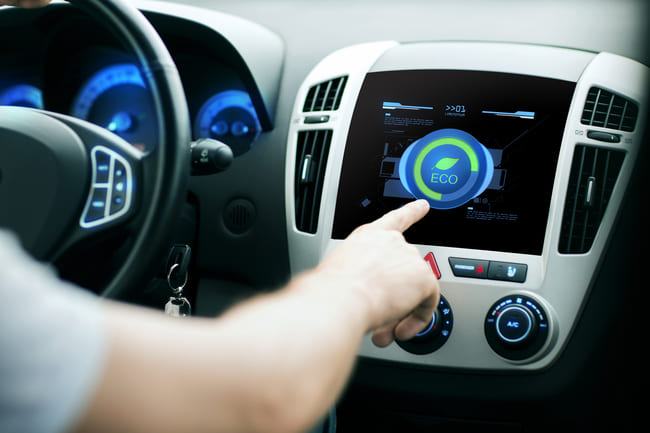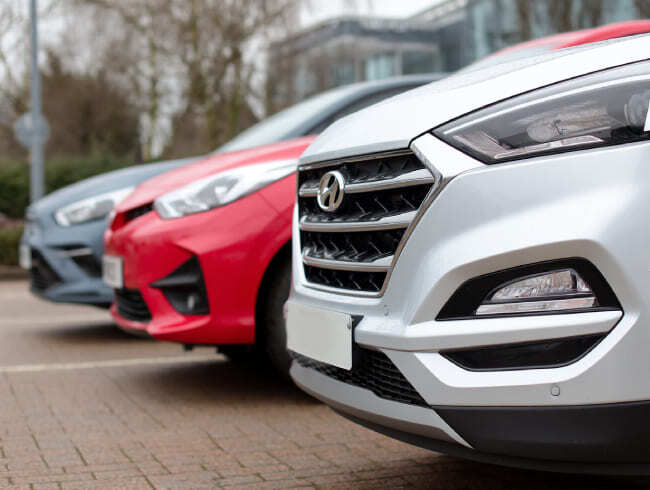What is a mild hybrid car? Definition, how it works, how it differs from full hybrids, and pros and cons
Have you ever wondered about car manufacturers' steps to make driving more efficient and eco-friendly? Mild hybrid cars might be the perfect solution for those looking to reduce fuel consumption without committing to a full hybrid. Let’s explore how these vehicles work, their benefits, and potential trade-offs.
What is a mild hybrid car?
A mild hybrid car, or MHEV (Mild Hybrid Electric Vehicle), integrates a traditional internal combustion engine with a compact electric motor and battery. This system uses an electric motor to assist with acceleration, enhance fuel efficiency, and support functionalities like start-stop systems. Mild hybrids are not capable of running solely on electric power; nevertheless, they improve overall performance and contribute to reducing emissions.
What does MHEV mean?
MHEV stands for Mild Hybrid Electric Vehicle. It refers to a vehicle that combines a conventional internal combustion engine with a small electric motor and battery.
An MHEV relies on its electric motor to support the engine, enhancing fuel efficiency and powering systems like start-stop functionality; however, it is not designed to function solely on battery energy. This setup offers improved performance and reduced emissions without the need for plug-in charging, making it a practical and cost-effective choice for drivers looking to transition to greener technology.
How does a mild hybrid work?
These types of vehicles use a battery-powered electric motor to assist a conventional petrol or diesel engine, improving fuel efficiency and reducing emissions. The system recharges the battery through regenerative braking while driving. Unlike full hybrids, they cannot run on electric power alone, but instead use the engine to boost power, especially during acceleration or stop-start. This combination improves fuel economy and reduces environmental impact without the need for external recharging. Components like the car alternator also play a crucial role in powering electrical systems during operation.
What are the benefits of a mild hybrid car?
Depending on your preferences, a mild hybrid car could be an excellent option. They offer improved fuel efficiency and reduced emissions, making them a greener choice. In addition, the design of the fuel tank has been optimised for better fuel management and integration with hybrid systems. Here are the main benefits of mild hybrid cars:

Mild hybrids improve the efficiency of the conventional engine by using electric assistance during high-demand situations, such as acceleration, and by optimising stop-start technology, resulting in fewer trips to the fuel station.
By relying partly on an electric motor, mild hybrids produce fewer greenhouse gases and pollutants than conventional vehicles, contributing to a cleaner environment.
These systems capture and reuse energy lost during braking to recharge the battery, ensuring better energy utilisation without the need for external charging.
- Seamless driving experience
The electric motor enhances performance by providing smoother acceleration, better low-speed torque, and a quieter driving experience, especially in city traffic.
Unlike plug-in hybrids or electric cars, mild hybrids recharge automatically while driving, eliminating the need for a charging station or special infrastructure.
What are the disadvantages of a mild hybrid car?
While mild hybrid cars present several advantages, they also come with limitations that potential buyers should consider. These vehicles generally offer only modest improvements in fuel efficiency and emissions reduction compared to full hybrids or electric vehicles. The reliance on traditional combustion engines means their environmental benefits are limited.

The fuel efficiency of mild hybrids is better than that of conventional cars but falls short of the savings offered by fully electric or hybrid options. This makes them less appealing to drivers seeking significant reductions in fuel expenses.
- Partial environmental impact
Although mild hybrids contribute to lower emissions than traditional vehicles, their dependence on combustion engines prevents them from achieving the zero-emissions benefits of electric or plug-in hybrids.
The integration of hybrid technology, including electric motors and batteries, increases the upfront cost compared to standard petrol or diesel cars. This may be a barrier for budget-conscious buyers.
Mild hybrids are designed to assist the engine but cannot operate independently on electric power. Drivers looking for vehicles capable of zero-emissions driving during short trips may find this limiting.
The hybrid system introduces additional components, such as batteries and electric motors, which may require specialised maintenance. This can potentially result in higher repair costs over time.
What is the difference between a hybrid and a mild hybrid?
The primary distinction between a hybrid and a mild hybrid lies in their charging and power systems. Hybrids, also known as self-charging hybrids, use a traditional fuel engine to recharge their batteries, while mild hybrids rely on a smaller battery pack and cannot operate on electric power alone.
Mild hybrids assist the engine for better efficiency but don't require external charging or deliver full-electric driving. In contrast, standard hybrids often have more robust battery systems, enabling short electric-only drives and greater energy recovery capabilities.
The table below outlines the main differences between hybrid and mild hybrid systems. This comparison provides a clear overview of how these systems work and their unique features.
| Feature |
Hybrid (Full Hybrid) |
Mild Hybrid (MHEV) |
| Definition |
A system where the car can run on electric power alone, engine power, or a combination of both. |
A system where the electric motor supports the engine but cannot power the car on its own. |
| Electric Motor Capability |
Can drive the car independently for short distances. |
Cannot drive the car independently, only assists the engine. |
| Battery Size |
Larger battery to store more energy for electric driving. |
Smaller battery primarily for start-stop systems and assistance. |
| Fuel Efficiency |
Higher fuel efficiency, especially in city driving. |
Improved efficiency compared to non-hybrids but less than a full hybrid. |
| Driving Modes |
Multiple modes: electric-only, hybrid, and engine-only. |
No electric-only mode; always combines electric assist with the engine. |
| Cost |
Generally more expensive due to the larger battery and advanced technology. |
Less expensive as the system is simpler and uses a smaller battery. |
| Complexity |
More complex systems require advanced engineering and maintenance. |
Simpler system, easier and cheaper to maintain. |
| Performance |
Can provide better low-speed acceleration with electric power. |
Improves efficiency and provides slight power boost during acceleration. |
| Regenerative Braking |
Captures and stores significant energy during braking. |
Captures less energy due to a smaller battery. |
| Examples |
Toyota Prius, Honda Accord Hybrid, Hyundai Ioniq Hybrid. |
Audi A6 MHEV, Volvo XC60 B5, Suzuki Vitara Hybrid. |
Are mild hybrids worth it?
If your focus is on improving fuel efficiency and reducing emissions without the higher costs of full hybrids or electric vehicles, they can be an excellent choice. Mild hybrids deliver better fuel economy than traditional vehicles and contribute to lower emissions.
While they don't offer the fully electric driving experience of EVs or the extended electric range of full hybrids, they provide a practical and cost-effective way to enjoy some of the benefits of electrification. For many drivers, it's a sensible compromise between performance, cost, and environmental impact.
How long do mild hybrid batteries last?
Mild hybrid batteries are typically designed to endure for the vehicle's lifetime, often lasting between 10 to 15 years under normal conditions. Proper maintenance and careful driving can extend their lifespan. Factors like extreme temperatures and frequent short trips can influence battery longevity, so adopting consistent driving habits can help maximise their performance.
How much does it cost to replace a mild hybrid battery?
Replacing a mild hybrid battery generally costs between £300 and £600 in the UK, depending on the car's make and model. Luxury or high-performance vehicles may incur higher costs. Fortunately, these batteries are engineered for durability, making replacements uncommon. Many manufacturers also offer warranties that cover hybrid components, further reducing potential expenses for owners.
Are mild hybrid cars more expensive to insure?
Insurance premiums for mild hybrid cars may be slightly higher than those for conventional vehicles. This is largely due to the specialised components, such as electric motors and batteries, which can be more expensive to repair or replace. However, as hybrid technology becomes more widespread, insurance companies are offering increasingly competitive rates. Comparing policies and seeking discounts for hybrid vehicles can help mitigate these costs.
Best mild hybrid cars UK
Here's a quick look at three popular mild hybrid cars available in the UK. Each offers unique benefits, from fuel efficiency to advanced technology, to suit a range of driving needs. Whether you need a family SUV or a city-friendly compact, these options stand out.
Hyundai Tucson
Combining style, comfort and eco-conscious performance, the Hyundai Tucson is equipped with the latest technology, including a digital dashboard and intuitive infotainment system. Ideal for families and long journeys, it offers a smooth driving experience, advanced safety features and a spacious interior. Delivering impressive fuel economy and low emissions, Tucson is powered by a 1.6-litre petrol engine combined with a 48-volt mild hybrid system. Its sleek design and efficiency make it a popular choice in the UK market.
Kia Sportage
A practical and eco-friendly option, the Kia Sportage is renowned for its reliability and comes with an excellent warranty. It includes high-tech features such as advanced driver assistance systems and a user-friendly touchscreen. With its comfortable interior and modern design, it stands out as a top choice for UK drivers. Powered by a 1.6-litre petrol engine and a 48V mild hybrid system, it reduces emissions and running costs. Balancing power and efficiency, the Sportage is a versatile SUV that appeals to many.
Toyota Yaris
The Toyota Yaris is a versatile yet compact car, perfect for daily driving and urban commutes. Equipped with a 1.5-litre petrol engine and a 48V mild hybrid system, it delivers reduced emissions and excellent fuel efficiency. The Yaris, despite its compact size, offers a surprisingly spacious interior along with advanced features like a smart safety system and a high-quality infotainment setup. With Toyota’s renowned innovation and durability, it is an environmentally friendly and dependable choice for city drivers in the UK.
Conclusion
Mild hybrid cars offer a balanced mix of improved efficiency, lower emissions, and modern technology. With components like the car starter motor supporting features such as start-stop systems, they provide a practical and eco-friendly option for drivers seeking a greener choice without going fully electric.
Top products related to this topic:






















